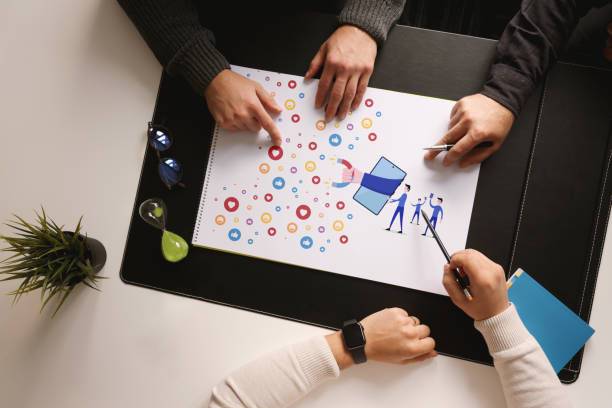In the digital age, social media has become an essential part of our daily lives. Whether you’re sharing a photo, networking professionally, or promoting a brand, these platforms help us connect in powerful ways. But while social media offers incredible benefits, it also carries risks — from privacy breaches to online scams. That’s why this blog focuses on “Social Media: how to use it safely”, so you can enjoy its perks without compromising your security or personal well-being.
What is Social Media?
Before diving into safety, let’s answer a fundamental question: What is social media?
Social media refers to web-based platforms and mobile applications that allow users to create, share, and interact with content and each other. Popular platforms include Facebook, Instagram, X (formerly Twitter), TikTok, LinkedIn, and Snapchat. Each platform serves a slightly different purpose—from professional networking to casual conversation and entertainment.
In simple terms, social media is the digital space where real-time communication, content sharing, and community building take place.
Why Social Media Safety Matters More Than Ever
As of 2025, over 4.9 billion people use social media. With so much personal and professional activity happening online, cybercriminals have more opportunities than ever. Data breaches, identity theft, cyberbullying, misinformation, and phishing attacks are increasingly common.
Staying safe isn’t about fear—it’s about smart and informed usage. Let’s look at how you can use social media safely in today’s digital world.
1. Strengthen Your Passwords and Use Two-Factor Authentication
Your first line of defense is your password. Use strong, unique passwords for each platform. Avoid using birthdates, pet names, or predictable phrases.
Best practices:
- Use a combination of letters, numbers, and special characters
- Never reuse passwords across platforms
- Enable two-factor authentication (2FA) for an extra layer of security
Many platforms now offer app-based or SMS-based 2FA options to verify your identity during login attempts.
2. Review and Adjust Privacy Settings
Every platform gives you control over who can see your content, follow you, or contact you. Take a few minutes to review your privacy settings and limit exposure where necessary.
Key settings to check:
- Who can see your posts (Public, Friends, Custom)
- Who can send you friend requests or direct messages
- Visibility of personal info like email, phone number, and location
Don’t forget to revisit these settings after app updates—they often reset or add new options.
3. Be Mindful of What You Share
Think twice before posting personal information such as your home address, travel plans, workplace, or children’s details. This type of data can be used for stalking, scamming, or identity theft.
Golden Rule: If you wouldn’t say it in a crowded room of strangers, don’t post it publicly online.
4. Recognize and Avoid Phishing Scams
Phishing is a tactic used by scammers to trick you into giving away sensitive information through fake links, emails, or direct messages. These scams often mimic real companies or social media platforms.
Warning signs of phishing:
- Urgent messages asking you to reset your password
- Unusual links or offers that sound too good to be true
- Messages from accounts that seem off or unfamiliar
When in doubt, don’t click. Report suspicious messages and visit official websites directly instead of using links.
5. Avoid Suspicious Apps and Quizzes
Many users unknowingly grant third-party apps access to their personal data. Avoid downloading apps or engaging with quizzes that ask for excessive permissions or data access.
Stick with verified, trustworthy applications and regularly review which apps are connected to your accounts. Revoke access for those you no longer use.
6. Monitor Your Digital Footprint
Your social media activity leaves a lasting impression—both socially and professionally. Future employers, clients, and even strangers can see what you post online. Stay aware of your digital footprint and manage your reputation actively.
Tips:
- Google yourself periodically to see what’s publicly visible
- Delete old or sensitive posts
- Think long-term before sharing anything personal or controversial
7. Use Trusted Security Software
Install antivirus and anti-malware tools on your devices. Keep your operating system, browser, and social apps updated to protect against vulnerabilities.
These tools help block malicious websites, prevent data theft, and notify you of suspicious activity in real-time.
8. Educate Children and Teens About Safe Usage
If you’re a parent, guardian, or educator, it’s vital to teach younger users how to navigate social media safely. Children and teens are often targeted by cyberbullies, predators, and scammers.
Guidelines for younger users:
- Set screen time limits
- Discuss what’s appropriate to share
- Encourage reporting and open communication if they encounter threats
Using child-friendly platforms or supervised accounts can help protect them while allowing them to enjoy the online world.
9. Report Abuse and Block Threats
Most platforms allow you to report abusive behavior, spam, or fake accounts. Use these tools proactively to keep your environment clean and safe.
You also have the power to block or mute users who make you uncomfortable. Social media should feel like a safe space—not a place of stress.
10. Log Out from Shared Devices
If you’re accessing your social media on a public or shared device—such as at a library, office, or café—always log out afterward. This prevents others from accessing your account.
Enable alerts for new logins, and review your device list to log out remotely if needed.
Final Thoughts: Social Media Safety Is in Your Hands
To sum it up, “Social Media: how to use it safely” starts with awareness and consistent habits. By managing your privacy settings, being cautious with what you share, and staying informed about common threats, you can fully enjoy the benefits of social platforms—without falling into common traps.
Social media is an incredible tool for connection, expression, and business—but only when used wisely. Stay sharp, protect your space, and encourage others to do the same.
Remember: Safety isn’t about restricting your experience—it’s about empowering you to use social media confidently and securely.
Let me know if you’d like this post adapted into a downloadable PDF, slide deck for presentations, or formatted for platforms like Medium, WordPress, or LinkedIn.




